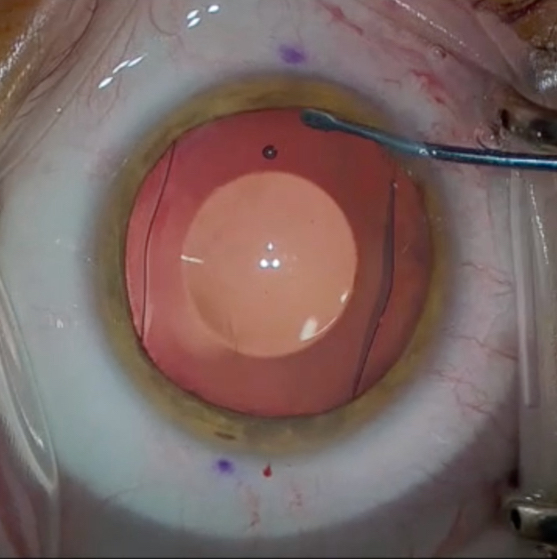 |
|
Implanting phakic intraocular lenses in children can tamp down amblyopia. Photo: Bobby Saenz, OD, and Mitch Ibach, OD. Click image to enlarge. |
Pediatric myopic anisometropic amblyopia is one of the most challenging clinical presentations. Making matters more challenging, conventional correction modalities, including spectacles, contact lenses and/or occlusion therapy, may not be suitable for some pediatric patients or for some ocular conditions. A recent study looked into the effectiveness of Visian intraocular collamer lenses (ICLs, Staar Surgical) and found that they offer long-term efficacy, safety and stability for correcting myopic anisometropic amblyopia in pediatric patients. The reported noncompliance with occlusion therapy validates the early implantation of Visian ICLs in cases with failed conventional treatment to guard against progression.
This prospective, interventional study, conducted in Cairo, enrolled 42 eyes of 42 patients who ranged in age from three to 18 years and had a mean preoperative spherical equivalent (SE) of -12.85D. All participants had myopic anisometropic amblyopia and underwent unsuccessful conventional therapy (80% with occlusion). After implantation of Visian ICLs, postoperative follow-up visits were scheduled up to 54 months, during which automated refraction and Pentacam imaging were performed.
The investigators observed a significant improvement in the postoperative corrected distance visual acuity and SE. The efficacy index had a value of 1.18, and the safety index was 1.09. The results showed refractive stability, with statistically insignificant changes in visual acuity and refractive status during the follow-up visits compared with the first postoperative visit. No postoperative complications were encountered.
“The implantation of Visian ICLs for cases of unilateral high myopia with intractable anisometropic amblyopia results in a long-term visual and refractive stability, and can also be gauged as a low risk procedure, evidenced by the long-term absence of reported complications,” the study authors concluded.
Morkos FF, Fawzy NF, El Bahrawy M, et al. Evaluation of the efficacy, safety and stability of posterior chamber phakic intraocular lenses for correcting intractable myopic anisometropic amblyopia in a pediatric cohort. BMC Ophthalmol. August 28, 2021. [Epub ahead of print]. |


